Angelus Silesius and the Mystical Path of Self-Transcendence
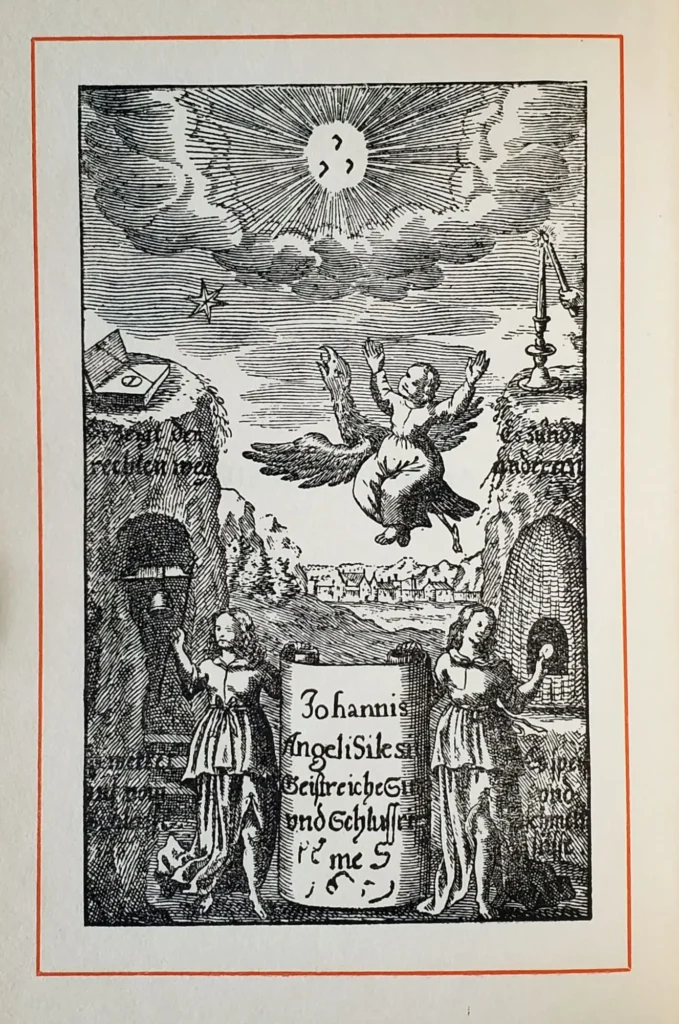
Angelus Silesius, born Johannes Scheffler (1624-1677), was a German mystic, poet, and theologian whose works profoundly impacted the development of Christian mysticism and spirituality. His enigmatic and paradoxical writings, particularly his collections of epigrams entitled “The Cherubic Pilgrim” and “The Sensual Description of the Four Last Things,” offer a unique and provocative perspective on the nature of God, the human soul, and the path to spiritual enlightenment. This essay will delve into the key themes and ideas in Angelus Silesius’ thought, explore their relationship to other mystical traditions and philosophies, and consider their implications for depth psychology, psychotherapy, and the understanding of psychological trauma.
The Life and Works of Angelus Silesius
Johannes Scheffler was born in 1624 in Breslau, Silesia (now Wrocław, Poland). He studied medicine and philosophy at the universities of Strasbourg, Leiden, and Padua before returning to Silesia, where he worked as a physician and began to explore mystical and spiritual writings. In 1653, he converted from Lutheranism to Catholicism and took the name Angelus Silesius (the Silesian Angel).
Silesius’ major works include:
- The Cherubic Pilgrim (Der Cherubinische Wandersmann, 1657)
- The Sensual Description of the Four Last Things (Sinnliche Beschreibung der vier letzten Dinge, 1675)
- Holy Delight of the Psyche (Heilige Seelenlust, 1657)
- The Epigrammatic Florilegium (Epigrammatisches Florilegium, 1676)
These works, particularly The Cherubic Pilgrim, contain thousands of short, rhyming couplets that express Silesius’ mystical and theological insights in a concise and often paradoxical manner.
The Mystical Vision of Angelus Silesius
At the heart of Angelus Silesius’ thought is a profound and radical understanding of the relationship between God and the human soul. For Silesius, God is not a distant, transcendent being, but the innermost ground and essence of the soul itself. The soul, in turn, is a microcosm of the divine, containing within itself the fullness of God’s being and the potential for ultimate union with the divine.
This understanding of the God-soul relationship is rooted in the mystical concept of the “ungrund” or “abyss,” a term that Silesius borrowed from the German mystical tradition, particularly the works of Meister Eckhart. The ungrund is the ineffable and indescribable source of all being, the divine nothingness from which all creation emanates and to which all creation ultimately returns.
For Silesius, the path to spiritual enlightenment involves a process of self-transcendence and self-annihilation, a letting go of the ego and a surrender to the ungrund within. This process is often described in paradoxical terms, as a “death” that leads to true life, or a “nothingness” that contains the fullness of being. As Silesius writes in The Cherubic Pilgrim:
“God is a pure Nothing! Concealed in Now and Here: The less you reach for Him, the more He will appear.”
The Influence of Neoplatonism and Negative Theology
Angelus Silesius’ mystical vision is deeply influenced by the Neoplatonic tradition, particularly the works of Plotinus and Pseudo-Dionysius the Areopagite. Neoplatonism emphasizes the transcendence and ineffability of the One, the ultimate source of all being, and the need for the soul to ascend through various levels of reality in order to achieve union with the One.
Silesius’ concept of the ungrund bears a striking resemblance to the Neoplatonic idea of the One, and his understanding of the soul’s journey towards God is reminiscent of the Neoplatonic path of ascent. Like the Neoplatonists, Silesius employs a form of negative or apophatic theology, using paradox and negation to point towards the ultimate ineffability of the divine.
This apophatic approach is also evident in the works of Pseudo-Dionysius, who emphasized the need to negate all concepts and images of God in order to approach the divine darkness beyond all knowing. Silesius echoes this theme in his own writings, frequently using paradox and contradiction to shatter the reader’s conceptual understanding and point towards the mystical truth beyond language and thought.
The Cherubic Pilgrim and the Path of Spiritual Transformation
Angelus Silesius’ most famous work, The Cherubic Pilgrim, is a collection of over 1,600 rhyming couplets that explore the nature of God, the soul, and the path of spiritual transformation. The title of the work refers to the cherubim, the angelic beings who guard the throne of God and symbolize the highest levels of spiritual contemplation and union.
Throughout The Cherubic Pilgrim, Silesius employs a wide range of mystical and theological concepts, often drawing on the language of alchemy, astrology, and Kabbalah to express his insights. He frequently uses paradox and contradiction to challenge the reader’s assumptions and point towards the ineffable truth of the divine.
One of the central themes of The Cherubic Pilgrim is the idea of the “birth of God” within the soul. For Silesius, the soul is not merely a passive recipient of divine grace, but an active participant in the unfolding of God’s being within the world. As he writes:
“God is not God without the soul, for in the soul’s abyss, The ungrund of God’s being eternal lies, I say.”
This idea of the soul as the birthplace of God has profound implications for the path of spiritual transformation. It suggests that the journey towards God is not a matter of external seeking or striving, but a process of inner awakening and self-realization. The soul must learn to let go of its attachments and identifications, to die to itself in order to be reborn in God.
Implications for Depth Psychology and Psychotherapy
While Angelus Silesius’ writings are primarily mystical and theological in nature, they have significant implications for depth psychology and psychotherapy. Many of the key themes in his thought, such as the process of self-transcendence, the integration of opposites, and the transformative power of paradox, are central concerns in depth psychology and psychotherapy.
The Jungian Perspective
The Swiss psychiatrist and psychoanalyst Carl Gustav Jung was deeply influenced by the Christian mystical tradition, including the works of Angelus Silesius. Jung saw in Silesius’ writings a profound understanding of the psychological process of individuation, the journey towards wholeness and self-realization.
For Jung, the idea of the “birth of God” within the soul was a powerful metaphor for the emergence of the Self, the central archetype of the psyche that guides the process of individuation. The Self represents the fullness of the psyche, the integrative principle that unites the conscious and unconscious aspects of the personality.
Jung also recognized the importance of paradox and contradiction in the process of individuation. He believed that the psyche contains a natural tendency towards wholeness and balance, and that this tendency often manifests through the emergence of opposites and contradictions within the personality. The task of individuation involves holding these opposites in tension, allowing them to transform and integrate in a higher synthesis.
This understanding of the role of paradox and contradiction in psychological growth is deeply resonant with Silesius’ use of paradox in his mystical writings. Silesius’ couplets often juxtapose seemingly contradictory statements or ideas, inviting the reader to transcend their logical understanding and embrace a higher, mystical truth. As he writes:
“The way to life is death, the way to rise is fall, The way to heaven leads through the depths of hell.”
Trauma and the Path of Self-Transcendence
Angelus Silesius’ understanding of the soul’s journey towards God, with its emphasis on self-transcendence and the letting go of attachments, also has important implications for the conceptualization and treatment of psychological trauma. Trauma, in many ways, represents a shattering of the psyche, a fragmentation of the self that disrupts the normal process of growth and individuation.
From a Silesian perspective, the path of healing from trauma involves a process of gradual self-transcendence and reintegration, a willingness to let go of the narrow identifications and attachments of the ego in order to embrace a more expansive and inclusive sense of self. This process often involves a confrontation with the shadow, the dark and painful aspects of the psyche that have been split off or repressed.
In this context, the therapist can be seen as a guide or midwife of the soul’s rebirth, helping the client to navigate the paradoxes and contradictions of the psyche and to surrender to the transformative power of the Self. The therapeutic relationship itself becomes a crucible for the alchemical process of individuation, a sacred space in which the old self can die and the new self can be born.
The Importance of Paradox and Negation
Angelus Silesius’ use of paradox and negation in his mystical writings also has significant implications for psychotherapy. He recognized that language and conceptual understanding are ultimately inadequate to the task of expressing the ineffable truths of the soul and the divine. His use of paradox and contradiction serves to shatter the reader’s logical mind and open them to a more intuitive and mystical mode of knowing.
In the therapeutic context, the use of paradox and negation can be a powerful tool for facilitating psychological transformation. By challenging the client’s fixed beliefs and assumptions, the therapist can help them to let go of their narrow identifications and embrace a more fluid and dynamic understanding of the self. Techniques such as paradoxical intention, double binds, and the use of koans in Zen Buddhism all employ a form of paradox to catalyze psychological growth and insight.
Angelus Silesius’ apophatic approach to spirituality, with its emphasis on the negation of concepts and images, also has parallels in the therapeutic process. Just as the mystic must let go of their conceptual understanding of God in order to approach the divine darkness, the client must often let go of their familiar self-concepts and identities in order to embrace a more authentic and integrated sense of self. The therapist’s role is not to provide answers or solutions, but to create a space of openness and unknowing in which the client’s true self can emerge.
The mystical poetry of Angelus Silesius, with its emphasis on self-transcendence, the birth of God within the soul, and the transformative power of paradox, offers a rich and provocative perspective on the nature of the psyche and the path of psychological and spiritual growth. His vision of the soul’s journey towards the divine, deeply influenced by Neoplatonism and apophatic theology, resonates with the insights of depth psychology and the process of individuation.
Silesius’ writings have influenced many modern thinkers, including Carl Jung, who saw in his work a profound understanding of the psychological process of transformation. The Silesian path of self-transcendence, with its emphasis on the letting go of attachments and the embrace of paradox, provides a valuable framework for the conceptualization and treatment of psychological trauma.
By engaging with the insights of Angelus Silesius and the mystical tradition he represents, therapists and healers can deepen their understanding of the human soul and the process of psychological and spiritual growth. They can learn to create a sacred space for the birthing of the Self, and to guide their clients through the dark nights and transformative fires of the individuation process.
In a world that often seeks certainty and resolution, the enigmatic and paradoxical wisdom of Angelus Silesius reminds us of the ultimate mystery and ineffability of the soul’s depths. His invitation to let go of our fixed concepts and identities, and to surrender to the ungrund of our own being, is a timeless call to embark on the great adventure of self-discovery and divine union. May his words continue to inspire and challenge us, as we navigate the twists and turns of our own cherubic pilgrimage.
Main Ideas:
• German mystic, poet, and theologian (1624-1677)
• Born Johannes Scheffler, converted to Catholicism and took name Angelus Silesius
• Major works include “The Cherubic Pilgrim” and “The Sensual Description of the Four Last Things”
Key ideas and themes:
• God as the innermost ground and essence of the soul
• Concept of “ungrund” or divine abyss
• Path of spiritual enlightenment through self-transcendence and self-annihilation
• Use of paradox and negative theology to express ineffable truths
• Influence of Neoplatonism and apophatic tradition
Mystical vision:
• Soul as microcosm of the divine
• “Birth of God” within the soul
• Union with God through letting go of ego and surrendering to the ungrund
Implications for depth psychology and psychotherapy:
• Resonance with Jungian concept of individuation
• Parallels between mystical journey and psychological transformation
• Use of paradox in facilitating psychological growth
• Relevance to understanding and treating psychological trauma
Influence:
• Impact on Christian mysticism and spirituality
• Inspiration for later thinkers, including Carl Jung
• Continued relevance for exploring psyche-spirit connections
Bibliography:
Silesius, A. (1986). The Cherubinic Wanderer. (J. E. Crawford Flitch, Trans.). Paulist Press. Silesius, A. (1995). Selections from The Cherubic Wanderer. (A. H. Wolfes, Trans.). Spiritual Journeys. DuBois, B. E. (2013). Angelus Silesius: The Self-Annihilation of the Seraphic Wanderer. University of New Mexico Press. Franckenberg, A. V. (1989). Angelus Silesius: A Biography. (E. Jayne, Trans.). Hodder & Stoughton. Kiess, E. (1992). Angelus Silesius: Buch der Predigten. Hirzel Verlag. Foley, M. J. (2016). The Shattering of the Self: Mystical Paradox in Angelus Silesius. In M. J. Foley & D. A. Fatula (Eds.), Mysticism and the Spiritual Quest: Crossing Boundaries of Belief (pp. 151-170). Wipf and Stock. Schürmann, R. (2001). Wandering Joy: Meister Eckhart’s Mystical Philosophy. Lindisfarne Books. Jung, C. G. (1969). The Collected Works of C. G. Jung, Volume 9, Part 1: The Archetypes and the Collective Unconscious. (R. F. C. Hull, Trans.). Princeton University Press. Jung, C. G. (1970). The Collected Works of C. G. Jung, Volume 14: Mysterium Coniunctionis. (G. Adler & R. F. C. Hull, Trans.). Princeton University Press. Stein, M. (1998). Jung’s Map of the Soul: An Introduction. Open Court. Further Reading: Angelus Silesius. (2008). Heilige Seelenlust: Geistliche Lieder. Reclam. Angelus Silesius. (2018). Epigrammatisches Florilegium. Reichert. Bielfeldt, D. (2003). Angelus Silesius’ Cherubinischer Wandersmann: Mystik und Dichtung bei Johannes Scheffler. Niemeyer. Ellinger, G. (2012). Angelus Silesius und die Mystik des Barock. Edition Marnau. Kemper, H-G. (1987). Die Bedeutung der “Cherubinische Wandersmann” von Angelus Silesius für die deutsche Literatur. Niemeyer. Lemcke, G. (1956). Die Dichtung des Angelus Silesius: Eine Einführung in den “Cherubinischen Wandersmann”. Reclam. McGinn, B. (2001). The Mystical Thought of Meister Eckhart: The Man from Whom God Hid Nothing. Crossroad. Plotinus. (1992). The Enneads. (S. MacKenna, Trans.). Penguin Classics. Pseudo-Dionysius the Areopagite. (1987). Pseudo-Dionysius: The Complete Works. (C. Luibheid & P. Rorem, Trans.). Paulist Press. Roth, S. (2017). Die Kraft der Widersprüche: Paradoxien in der Dichtung des Angelus Silesius. Peter Lang. Stoeber, M. (2010). Spiritual Paradoxes in the Cherubinischer Wandersmann of Angelus Silesius. In M. Stoeber & H. Zock (Eds.), Religion and Psychology in Transition: Psychoanalysis, Feminism, and Theology (pp. 71-85). International Scholars Publications. Van Dusen, W. (1981). The Paradox as a Tool in Psychotherapy. Psychotherapy: Theory, Research & Practice, 18(3), 264-270. Wilber, K. (2000). Integral Psychology: Consciousness, Spirit, Psychology, Therapy. Shambhala. Winnicott, D. W. (1971). Playing and Reality. Tavistock Publications.




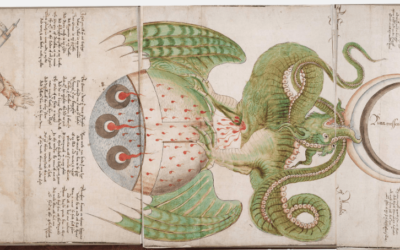
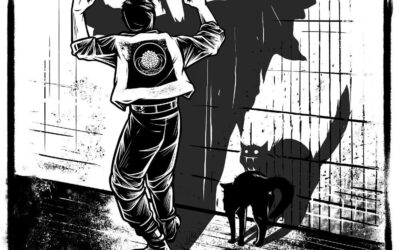
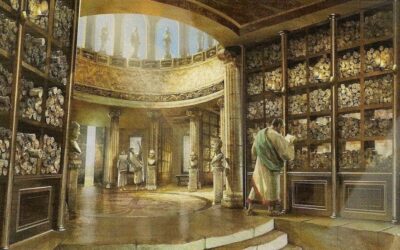
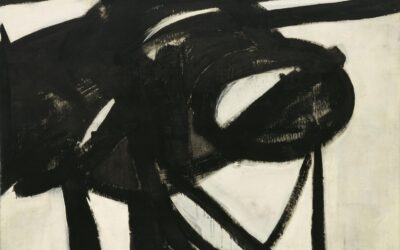

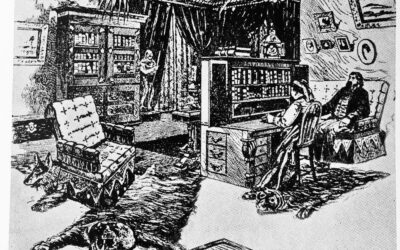
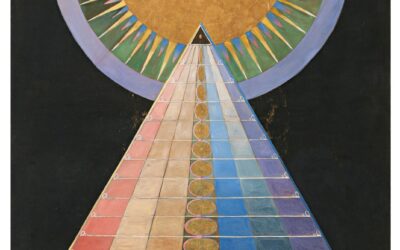



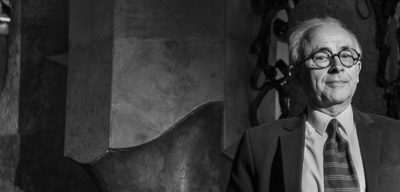
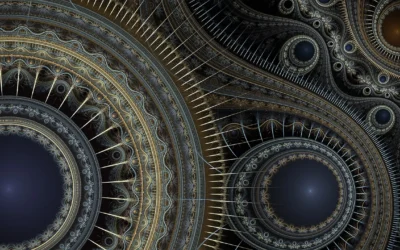


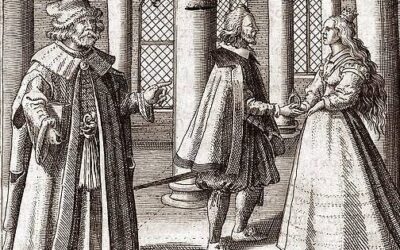
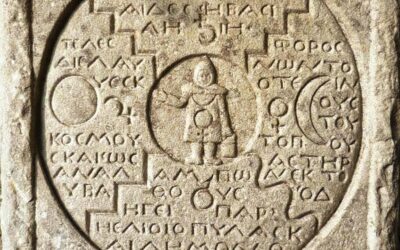
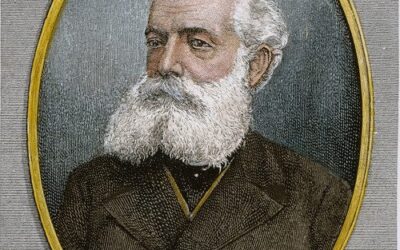
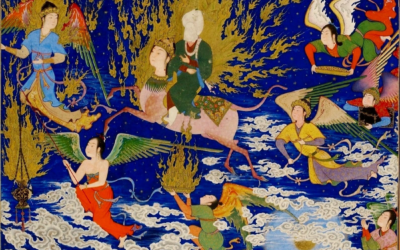
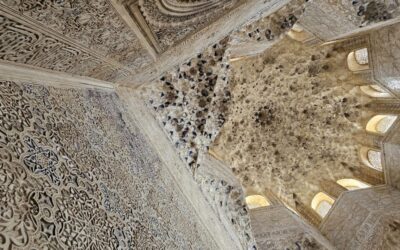
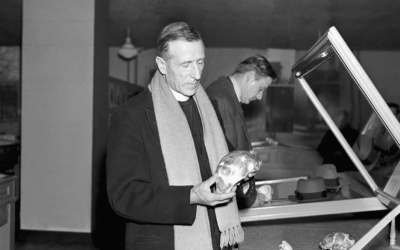
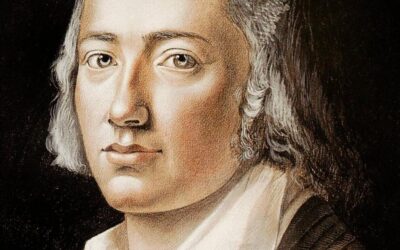
0 Comments